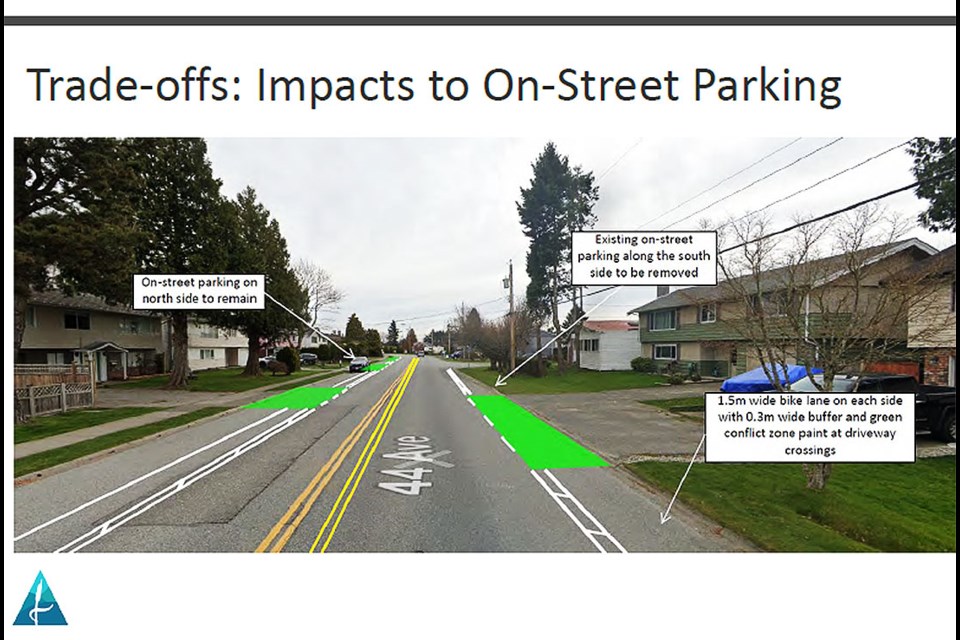It’s an ambitious plan which could result in a more complete cycling network throughout the City of Delta.
Civic staff recently provided an update on the ongoing work to refine the draft Delta Cycling Master Plan to the Climate Action and Community Livability Advisory Committee, a plan that identifies current gaps, recommendations and cost estimates.
See the maps above on what’s now in store for all three Delta communities and what’s in the current five-year capital plan to improve the cycling network.
A variety of new cycling facilities including shared bike lanes, marked bike lanes, protected bike lanes as well as multi-use pathways are being considered.
An open house was recently held at Delta Municipal Hall on proposed cycling improvements on 44 Avenue from Arthur Drive to 57 Street.
Currently in the design stage, the project includes marked buffered on-street cycle lanes, a defined parking lane along the north side of 44 Avenue as well as the removal of on-street parking along the south side of 44 Avenue to accommodate the cycling lanes.
Residents have conveyed concerns about the potential loss of street parking, one of the biggest challenges in improving the overall cycling network.
Construction is tentatively scheduled for this fall, which is to tie into the existing cycling lanes along Arthur Drive, south of 44 Avenue, and would result in a continuous cycling facility on 44 Avenue from Ladner Elementary to Dugald Morrison Park.
Delta’s draft cycling plan contains several budget options including keeping the status quo as far as gradual bike lane increases, which would cost $100,000 per year.
There’s also an “enhanced status quo” option that would see the city spend $250,000 annually, getting an additional 2,000 metres of painted bike lanes, while an “aspirational” option would see the city spend $1 million annually.
Public engagement is ongoing as well as with key stakeholders including HUB Cycling, various city advisory committees as well as the Mayor’s Youth Council.
The final version of the master plan is to be considered by council this fall.




